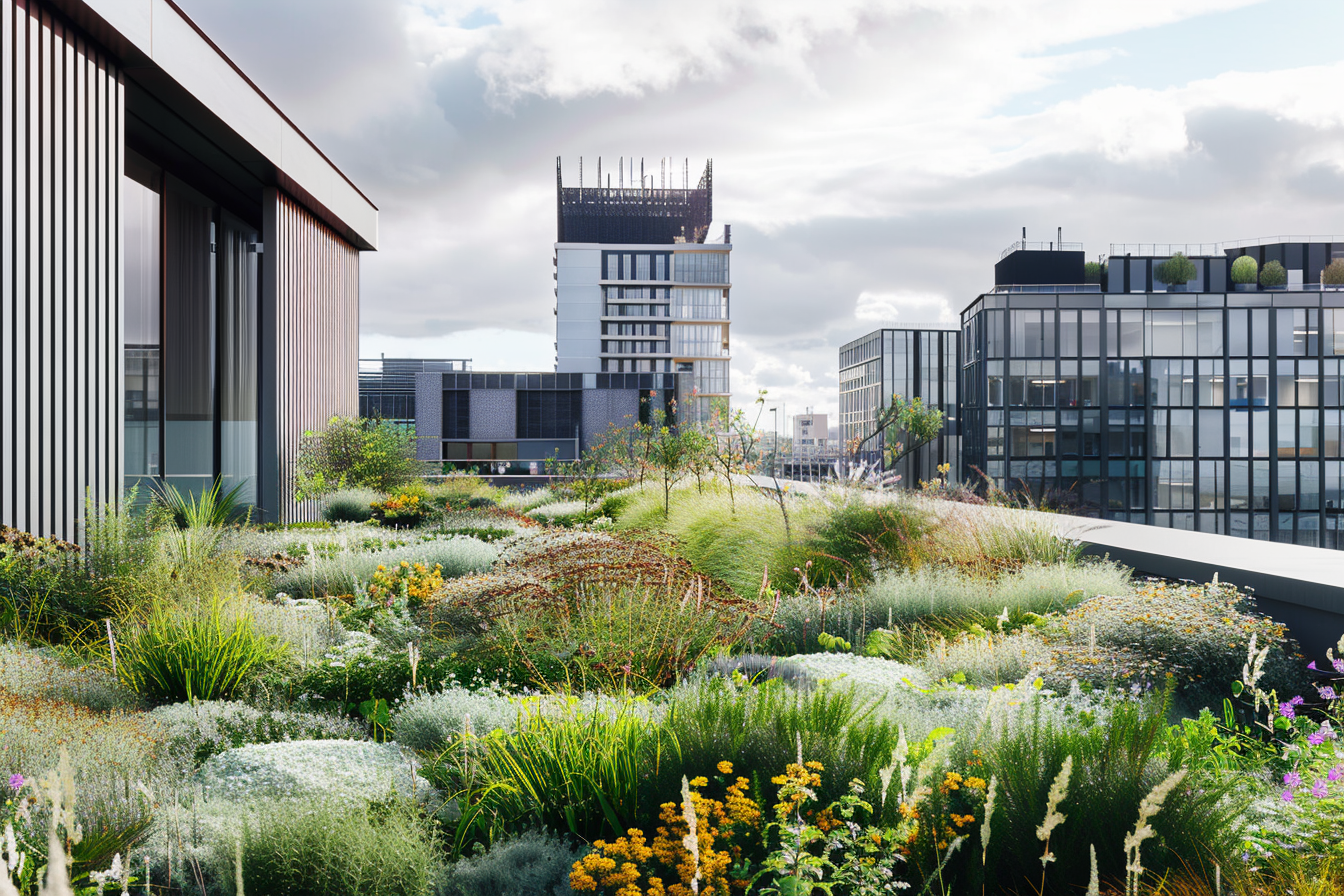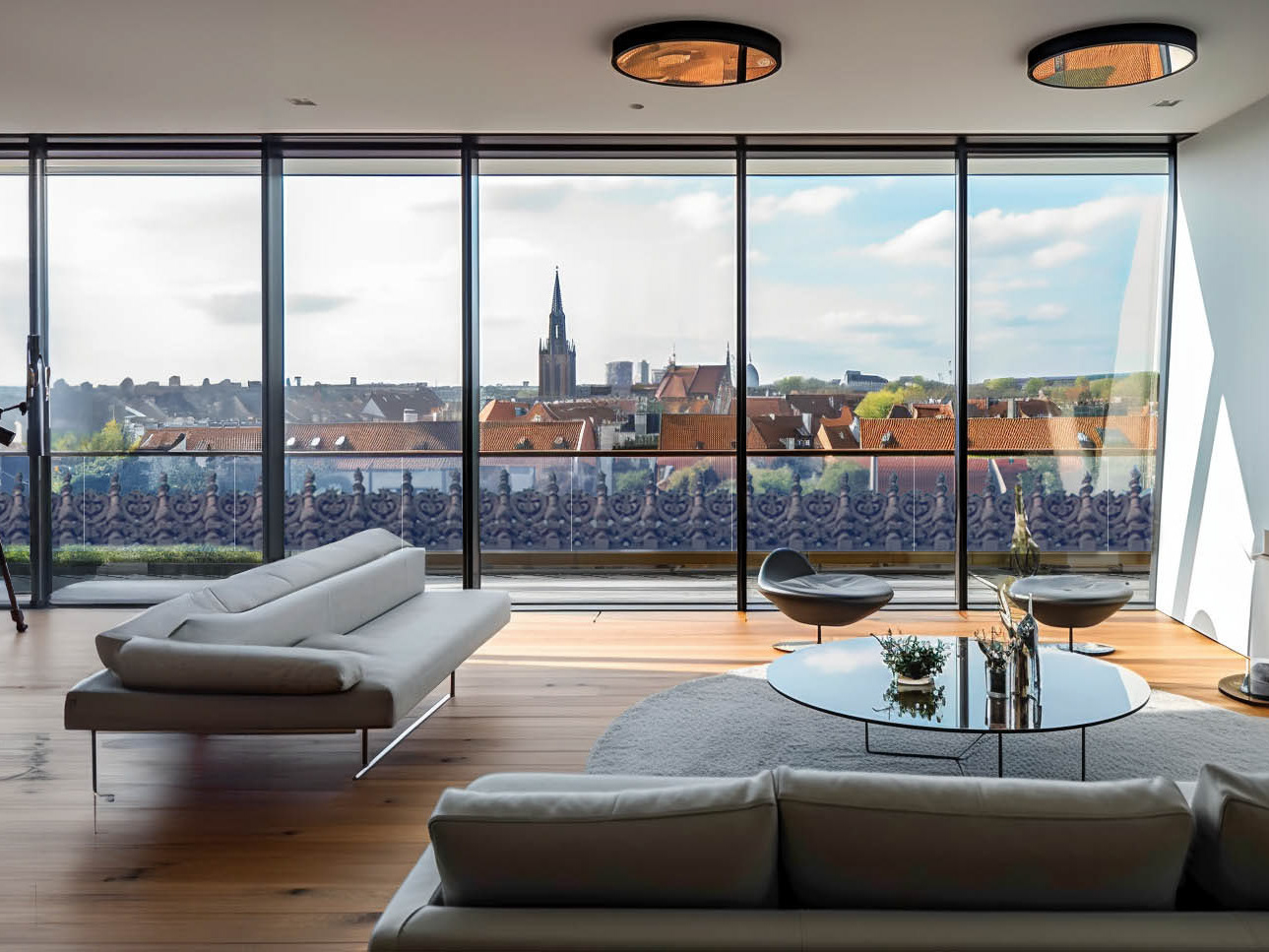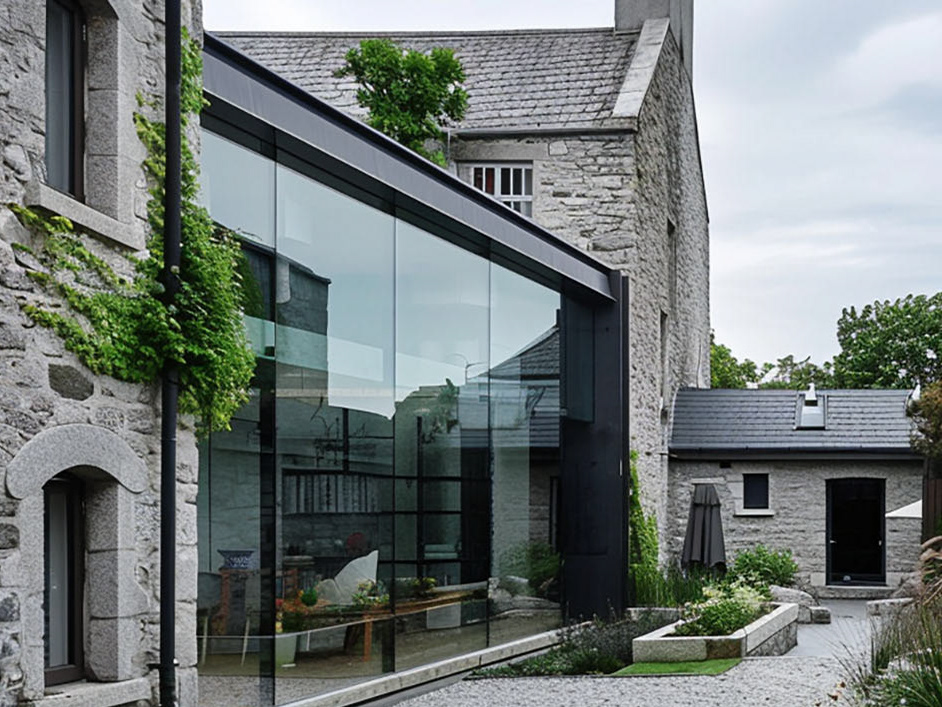Harmonizing with Nature:
Climate Resilient Architecture for Energy Efficiency and Enhanced Well-Being.
Architecture is in a state of constant evolution, adapting not only to enhance our comfort but also to address our deepening understanding of the planet's resources and the dynamics of Earth's changing climate. As our needs and environmental awareness evolve, so too must the spaces we inhabit. This evolution compels us to continuously refine our building methods and technologies. Faced with the challenges of climate change and energy shortages, it is imperative that we rethink our design and construction methodologies to ensure they are sustainable.
The need for energy-efficient homes that minimize carbon emissions is increasingly critical, a reality that becomes particularly clear during extreme weather conditions, whether freezing cold in temperate zones or intense heat in tropical regions. Our goal is to deeply integrate energy-efficient, climate-resilient, and responsive design principles into our living environments. This integration ensures our comfort while actively safeguarding our surroundings. By adopting established methods such as Energy Efficient Design, Passive Design, Passive House (Passivhaus), LEED, and NZEB, and utilizing durable, low-carbon materials alongside innovations like natural cooling systems and rainwater harvesting, we can significantly reduce the energy consumption and environmental impact of our buildings.
These comprehensive standards not only improve our quality of life but also enhance our buildings’ capacity to withstand the broader effects of climate change. Implementing these practices equips our buildings for future challenges, ensuring they offer secure and sustainable comfort regardless of location, while also being cost-effective over time.
The Essence of Climate-Responsive Architecture
Climate-Responsive architecture signifies a new fundamental shift in the way we approach building design, aligning our structures with the nuances of their local climates. This method involves a comprehensive consideration of site-specific factors like temperature, weather patterns, sun path, and environmental conditions. The goal is to craft buildings that minimize energy consumption, reduce environmental impact, and ensure the comfort of occupants with minimal reliance on artificial energy sources. This approach starts with an intensive analysis of local climate data, moving beyond conventional architectural concepts to create buildings that are dynamic ecosystems, interacting seamlessly with their environment. Moreover, this method often necessitates advanced technological solutions, not only for initial design but potentially also for ongoing building adaptations in response to environmental changes. This aligns perfectly with our commitment to sustainable and adaptive design about which you can read more here.
Strategies for Sustainable and Adaptive Living Spaces:
Fusing architectural innovation with climate analysis gives rise to dwellings that elevate our well-being and reduce ecological footprints. Our strategies span a range of techniques, from energy efficiency and sustainable material use to renewable energy integration and smart, adaptive systems. This ensures that buildings are not only comfortable but also environmentally conscientious, with a foresight to adapt to imminent climatic shifts.
Energy-Efficient and Climate-Responsive Design: This approach starts with Passive Design methodologies, which apply natural physics principles to optimize heating, cooling, lighting, and ventilation. It involves strategic alignment and shaping of buildings to maximize solar energy capture, along with window placement and insulation methods that boost energy efficiency and prevent heat loss.
Sustainable Construction and Materials: Emphasizing the use of low-energy, sustainable, and locally sourced materials, such as efficient insulation, is essential. Standards like Net Zero Carbon Buildings Commitment, NZEB, and LEED are particularly focused on the energy consumed in material production, transportation, and the construction process, advocating for materials that enhance the overall energy efficiency of buildings.
Renewable Energy and Resource Management: Implementing renewable energy sources such as solar panels, wind turbines, and geothermal systems, coupled with rainwater harvesting and water reuse systems, forms a comprehensive approach to resource management. This aligns with the principles of Zero Energy Housing and the BREEAM standard.
Smart and Adaptive Building Systems: Advanced technologies are employed for energy management and optimization, alongside designing buildings with adaptable features for future climate scenarios. This includes the integration of smart building technologies and systems capable of dynamically responding to environmental changes.
Holistic and Community-Centric Planning: An integrated design approach is key, incorporating landscaping for environmental benefits and considering the broader community and urban context. This approach promotes communal resilience and sustainability, aligning with standards like the WELL Building Standard and the Living Building Challenge.


Building Harmony with the Environment
While various well-established standards offer robust guidelines, the essence of climate-responsive architecture lies in the pursuit of cost-effective, economically and ecologically balanced solutions aimed at comfort and well-being. A balanced optimization of these elements is achieved through meticulous site analysis, considering factors such as sun direction, window placement, and natural ventilation. The design process is iterative, involving continuous modelling and analysis to ensure the building is attuned to its local climate and micro-climate.
Embracing a New Standard of Comfort
This architectural philosophy also necessitates a shift in comfort standards, promoting a natural and adaptive lifestyle. Leveraging natural systems like the sun and wind, and adapting to seasonal changes reduces energy consumption. This approach calls for an acceptance of natural temperature variations and a readiness to adjust lifestyles in harmony with nature's rhythms.
The convergence of climate-resilient and energy-efficient design with passive solutions signifies a revolutionary shift in architectural thinking. It represents a commitment to building spaces that not only provide shelter but also resonate with their natural environment. This approach in architecture is a commitment to a sustainable future, prioritizing our well-being while conscientiously preserving the environment for generations to come.
________________________________________
Read Also
________________________________________
________________________________________
JACA
ARCHITECTURE+DESIGN






